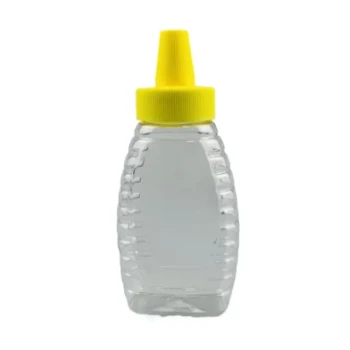From a practical standpoint, the primary advantages of honey pouches are their convenience and cost-efficiency. Made from lightweight, flexible materials, they significantly reduce shipping costs compared to glass or even rigid plastic. Their resealable spouts offer mess-free pouring and easy storage, making them a highly functional choice for both commercial and personal use.
Choosing honey packaging is a strategic decision that balances four key factors: cost, convenience, presentation, and preservation. Honey pouches excel in the first two, while traditional containers like glass jars often prioritize the latter two.
The Core Advantages of Honey pouches
Honey pouches are designed for modern logistics and user-friendliness. Their benefits stem directly from their material and construction.
Superior Portability and Shipping Efficiency
The most significant advantage is weight. Pouches, typically made of plastic and aluminum foil, are exceptionally lightweight.
This directly translates to lower shipping costs, a critical factor for producers and distributors. Their flexible nature also allows for more efficient packing, maximizing space in transit.
Unmatched Dispensing Convenience
Pouches are engineered for easy use. Most feature a resealable spout that allows for controlled, spill-free pouring.
The flexible body is easy to squeeze, ensuring minimal product waste. This contrasts with rigid jars, from which it can be difficult to extract the last bits of honey.
Efficient Storage and Handling
Their non-rigid form means pouches can be stored more easily in crowded pantries or commercial kitchens. Once empty, they take up virtually no space in the trash or recycling bin.
How Pouches Compare to Traditional Containers
Understanding the value of pouches requires comparing them to the established alternatives: glass jars, plastic jars, and squeeze bottles.
Pouches vs. Glass Jars
Glass is the gold standard for preservation and presentation. Its non-reactive nature perfectly maintains honey’s flavor, while its transparency showcases the product's color and quality.
However, glass is heavy and fragile, leading to higher shipping costs and risk of breakage. Pouches offer the opposite benefits: they prioritize cost-effective logistics and durability over premium aesthetic appeal.
Pouches vs. Plastic Jars & Bottles
Rigid plastic jars offer a compromise, providing better durability and lower weight than glass. Classic LDPE/PET squeeze bottles are designed for precise, tabletop dispensing.
Honey pouches serve a different function. They are excellent for bulk dispensing or refilling smaller containers. Their design is less about precise application and more about easy, large-volume pouring.
Understanding the Trade-offs of Honey Pouches
While highly practical, honey pouches are not the perfect solution for every situation. Objectivity requires acknowledging their limitations.
Perceived Value and Presentation
A pouch does not convey the same artisanal or premium quality as a heavy glass jar. For brands focused on high-end positioning, a pouch may not align with their marketing message.
Material Integrity
Glass is completely inert and impermeable, offering the absolute best protection against moisture and gas exchange over long periods. While modern pouches offer excellent protection, they do not match the absolute purity and long-term storage integrity of glass.
Dispensing Control
While the spout is convenient for pouring, it lacks the fine control of a squeeze bottle's flip-top cap, which is specifically designed for dispensing viscous liquids like honey onto food with precision.
Making the Right Choice for Your Goal
Select your packaging based on your primary objective.
- If your primary focus is minimizing shipping costs and maximizing operational efficiency: Honey pouches are the clear winner due to their low weight and space efficiency.
- If your primary focus is showcasing honey's natural quality and building a premium brand: Glass jars remain the superior choice for their elegant presentation and preservation qualities.
- If your primary focus is the end-user's tabletop convenience and controlled dispensing: A classic squeeze bottle is purpose-built for the job.
- If your primary focus is durability for transport to markets or direct-to-consumer shipping: Shatterproof plastic jars offer a secure and lightweight alternative to glass.
By aligning your packaging choice with your primary objective, you ensure your product succeeds from the shelf to the table.
Summary Table:
| Advantage | Key Benefit |
|---|---|
| Portability & Shipping | Lightweight and flexible, significantly reducing shipping costs and maximizing space. |
| Dispensing Convenience | Resealable spout allows for controlled, spill-free pouring and minimal product waste. |
| Storage Efficiency | Non-rigid form allows for easy storage in pantries or commercial kitchens; takes up minimal space when empty. |
Ready to optimize your honey packaging and logistics?
At HONESTBEE, we specialize in supplying commercial apiaries and beekeeping equipment distributors with the wholesale packaging solutions they need to succeed. Honey pouches are a key part of our product range, offering the cost-efficiency and convenience your business requires.
Contact our experts today to discuss how our wholesale-focused operations can provide you with the right packaging to reduce costs and improve efficiency.
Related Products
- Food Grade Plastic Honey Bucket Pail for Beekeeping
- Inverted Squeezable Honey Jar with No Drip Flip Top Cap for Easy Pouring
- Classic Beehive Honey Bottle Jar with Squeeze Dispenser Lid
- Modern Honeycomb Pattern Wooden Honey Dipper for Stirring and Drizzling
- Premium Heat-Resistant Glass Honey Dipper
People Also Ask
- Why might producers choose plastic containers for honey? A Guide to Cost-Effective & Durable Packaging
- Can you store honey in a plastic bucket? Yes, with the right food-grade HDPE.
- Does honey last longer in glass or plastic? Preserve Your Honey's Purity for Decades
- When are pouches or tubes used for honey packaging? For Portability & Portion Control
- Can you store honey in stainless steel? Yes, for Superior Purity and Longevity



















